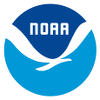Menu

Objectives
Why Lake Erie?
The Lake Erie ecosystem now faces wide and varied threats to its health and integrity, including harmful algal blooms (HABS) in the west basin, recurring low oxygen episodes (“dead zones”) in the central basin, and invasive species. Each of these threats has the potential to disrupt normal food web and ecosystem processes, and in turn, jeopardize the ability of Lake Erie to provide valued ecosystem services (e.g., recreational and commercial fish production, safe drinking water, and clean, bacteria-free beaches).
What is being done?
Clearly, these issues require a coordinated lake-wide multidisciplinary approach. In response, NOAA GLERL is building upon previous planning efforts to bring U.S. and Canadian Lake Erie agencies and researchers together to better understand each of these threats and their impact on the Lake Erie ecosystem. The primary goal of this research is to develop useful products, such as HAB and fish production forecasting tools to help guide Lake Erie resource management and future planning.
What are IFYLE’s key goals?
The science priorities are based upon years of planning by the Lake Erie Millennium Network and by NOAA GLERL. The primary objectives of this research are to (1) examine the causes and consequences of low-oxygen events, (2) evaluate how lake physics and food webs affect fish productions, and (3) examine HABs. All three objectives are connected through Lake Erie's food web. The ultimate application of this research is to develop forecasts of anoxia, HABs and fish production that can aid decision-making processes. Some more specific objectives are:
Develop models to characterize and understand the magnitude, timing, and extent of the “dead zone”, as well as HAB formations, in Lake Erie
-
Build/refine ecosystem forecasting tools to describe/predict habitat fields ( e.g., temperature, oxygen, water clarity) that can influence fish production and HAB formation.
Determine how hypoxia, exotic species, and HABS influence the distribution and productivity of native species, fisheries production, and biodiversity.
How is IFYLE different from other research programs?
IFYLE is unique in several ways. First, it is believed to be the largest, most comprehensive, multidisciplinary research effort ever conducted on Lake Erie, involving numerous U.S. and Canadian scientists. Second, IYFLE is focused not only on understanding the ecosystem, but ultimately on applying the scientific understanding to develop tools and products useful to resource managers. Third, the research explores both why a dead zone forms in Lake Erie and how it influences the ecology and productivity of the system (including fish).


